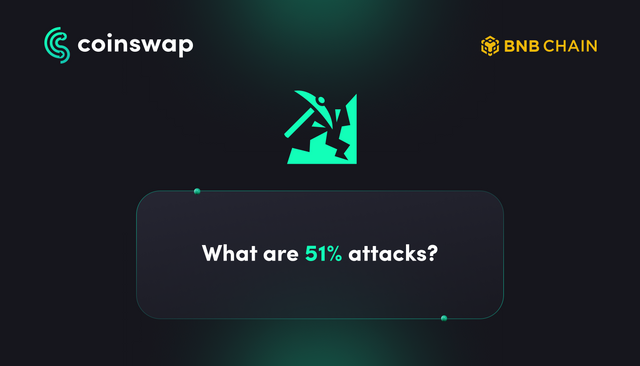
In the intricate world of blockchain, security is the bedrock on which trust is built. Yet, a looming threat known as the 51% attack casts a shadow over the decentralized landscape. But what exactly is a 51% attack, and why does it send ripples of concern through the blockchain community? 🌐💻
At its essence, a 51% attack occurs when a single entity or group acquires control of more than 50% of the total computational power (hash rate) on a blockchain network. This seismic shift in control grants the attackers unprecedented power, allowing them to manipulate transactions and compromise the very fabric of the entire system.
Blockchain's strength lies in its decentralized nature. Scattered across a network of nodes, each participant contributes to the consensus mechanism, preventing any single entity from holding undue influence. However, a 51% attack disrupts this delicate balance, giving malevolent actors the keys to the kingdom. ⚖️🔒
One of the gravest concerns in a 51% attack is the potential for double-spending. With majority control, attackers can forge an alternative version of the blockchain, enabling them to spend the same cryptocurrency units more than once. This deceitful act undermines the very essence of blockchain – immutability.
While giants like Bitcoin, with their colossal hash rates, seem impervious to a 51% attack, smaller or less secure networks, particularly those reliant on Proof-of-Work (PoW) consensus mechanisms, face heightened vulnerability. Cryptocurrencies such as Litecoin and Ethereum Classic have fallen victim to 51% attacks, prompting widespread apprehension about the security of lesser-known blockchain projects.
In response to this menace, blockchain networks are exploring alternative consensus mechanisms. Proof-of-Stake (PoS), Delegated Proof-of-Stake (DPoS), and other models aim to mitigate the risk of 51% attacks by diluting the influence of computational power alone. These models often necessitate participants to stake a certain amount of cryptocurrency to validate transactions, serving as a deterrent against malicious activities.
Even as preventive measures evolve, the specter of 51% attacks underscores the constant need for robust security protocols in the dynamic landscape of blockchain technology. Ongoing research and innovation in consensus mechanisms, network architecture, and cryptographic methods are pivotal in fortifying blockchain networks against emerging threats.
In conclusion, the 51% attack remains a formidable threat to the security and reliability of blockchain networks. As technology advances, the pursuit of innovative solutions to mitigate these risks is relentless. The resilience of blockchain hinges on the collective effort to outpace potential adversaries, ensuring the enduring integrity and dependability of decentralized systems. 🚀🔒